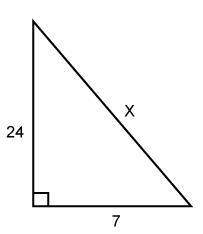
Mathematics, 11.12.2019 22:31 Picklehead1166
The united states bureau of labor statistics (bls) conducts the quarterly census of employment and wages (qcew) and reports a variety of information on each county in america. in the third quarter of 2016, the qcew reported the total taxable earnings, in millions, of all wage earners in all 3222 counties in america.
suppose that james is an economist who collects a simple random sample of the total taxable earnings of workers in 56 american counties during the third quarter of 2016. according to the qcew, the true population mean and standard deviation of taxable earnings, in millions of dollars, by county are ? =28.29 and ? =33.493, respectively.
let x be the total taxable earnings, in millions, of all wage earners in a county. the mean total taxable earnings of all wage earners in a county across all the counties in james' sample is
use the central limit theorem (clt) to determine the probability p that the mean taxable wages in james' sample of 56 counties will be less than $33 million. report your answer to four decimal places.
p(x? ? < 33)=
use the clt again to determine the probability that the mean taxable wages in james' sample of 56 counties will be greater than $30 million. report your answer to four decimal places.
p(x? ? > 30)=

Answers: 3


Another question on Mathematics

Mathematics, 21.06.2019 15:30
Neveah and clint are baking muffins for the bake sale. they need to bake 30 muffins for their display case. clint has baked 4 so far, and neveah has baked 7. how many muffins (m) do they have left to bake? show your work!
Answers: 1

Mathematics, 21.06.2019 18:30
If you are trying to move an attached term across the equal sign (=), what operation would you use to move it?
Answers: 2

Mathematics, 21.06.2019 20:00
The midpoints of the sides of the large square are joined to form a smaller square. what is the area of the smaller square
Answers: 1

Mathematics, 21.06.2019 20:30
Does the function satisfy the hypotheses of the mean value theorem on the given interval? f(x) = 4x^2 + 3x + 4, [−1, 1] no, f is continuous on [−1, 1] but not differentiable on (−1, 1). no, f is not continuous on [−1, 1]. yes, f is continuous on [−1, 1] and differentiable on (−1, 1) since polynomials are continuous and differentiable on . there is not enough information to verify if this function satisfies the mean value theorem. yes, it does not matter if f is continuous or differentiable; every function satisfies the mean value theorem.
Answers: 1
You know the right answer?
The united states bureau of labor statistics (bls) conducts the quarterly census of employment and w...
Questions







Mathematics, 17.12.2021 04:20




Mathematics, 17.12.2021 04:20



Mathematics, 17.12.2021 04:20

Social Studies, 17.12.2021 04:20



Computers and Technology, 17.12.2021 04:20


Geography, 17.12.2021 04:20




